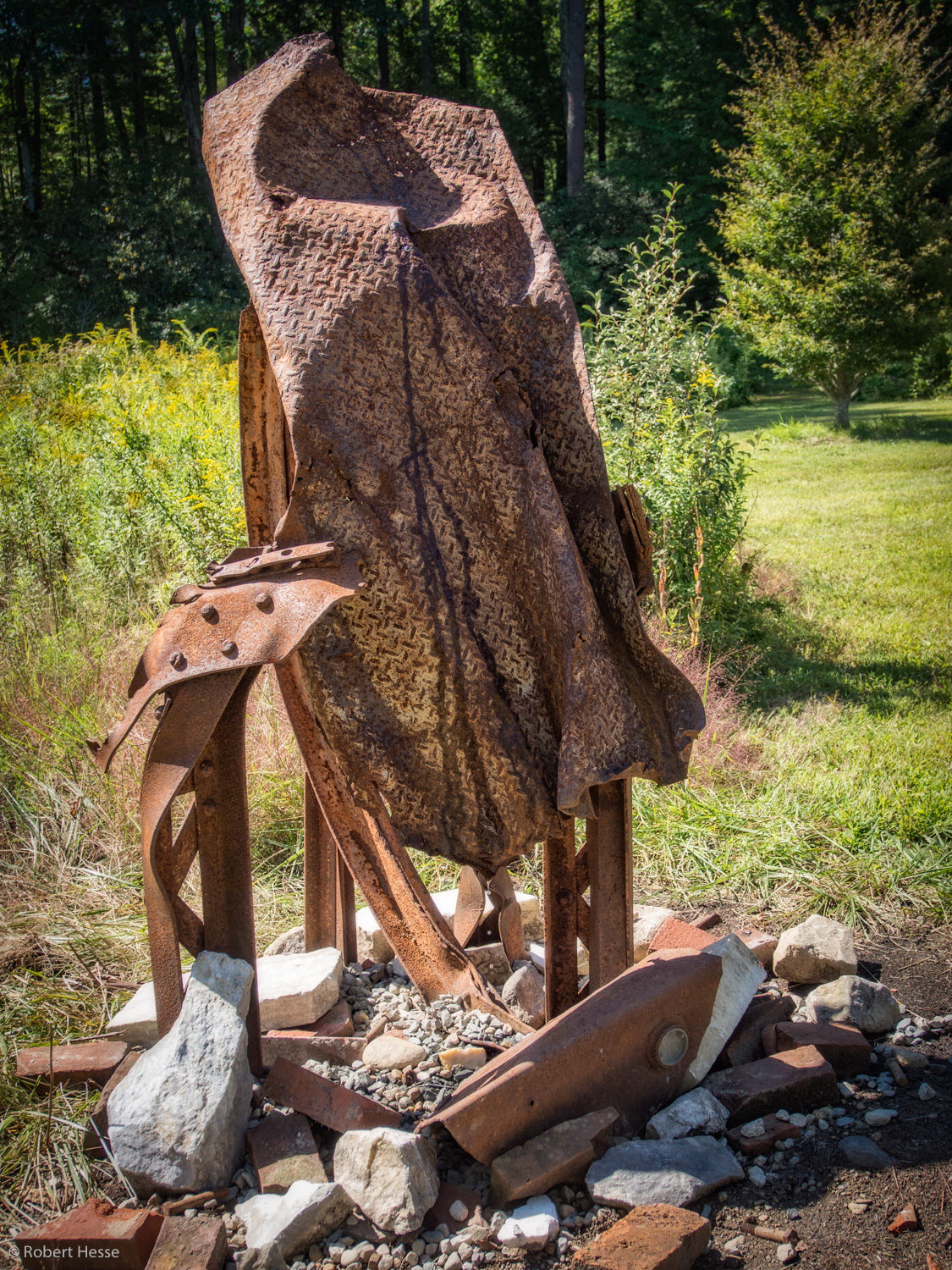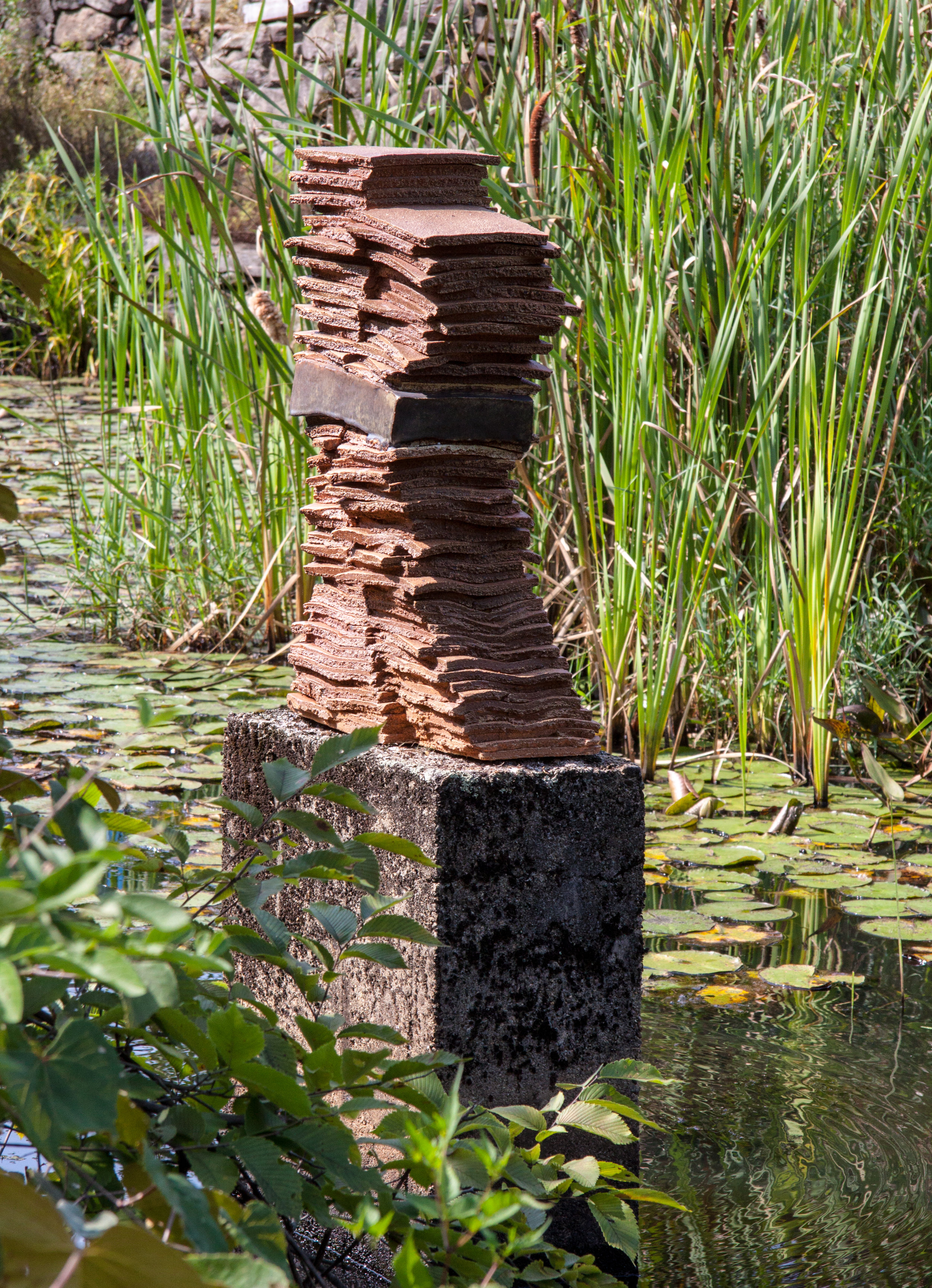I started writing a follow-up to the blog, All about Art, from two weeks ago in which I unintentionally wrote about six women artists and did not mention one man. I thought about the fact that this would never happen in an issue of ARTnews or Art Forum, despite the work of the Guerilla Girls, a nonprofit organization that since the early 1980s has been raising awareness of the lack of equal representation of women artists in major art museums and galleries. Then I proceeded to write about some of the male artists exhibiting at Old Frog Pond Farm this fall.
Where I Get My Water, Ray Ciemny
Ray's piece is a commentary on the scarcity of clean water for many people on our planet. Made of scrap steel and rubble, the girders were salvaged from the old Fitch’s Bridge above the Nashua River in Groton, MA.
Then I changed my mind, because it is the opening of apple picking and I felt I should write about the beautiful diversity of apples ripening in the orchard.
Then I had a dream where I had to cut off the lower half of my leg.
Cutting off one’s leg is a major life altering event. In my dream, I wasn’t upset about it, but was calmly trying to decide when would be the right time to do it. I wasn’t considering the challenges or the healing or the rehabilitation—it was a dream after all, a symbol.
Losing a leg in a dream is fairly easy to analyze. Our legs are what we stand on, what supports us, and having two legs gives us balance. To dream that I was about to cut off a significant part of one leg seems to indicate that something in my life is out of balance. Or is it a way to take control of what is out of control? Or, maybe, I saw myself as split in two, two legs, and was trying to become one. I agree, there are other, better ways to make myself whole, but my unconscious did find the imagery to express itself and get my attention.
When I wake up with an image from a dream that is very clear, I like to contemplate and write about it. This cut off my leg dream was giving me a clear signal of the need for radical change, though what exactly it refers to remains opaque.
I could be anticipating the craziness of harvest time. Yellow, red, green, scarlet, and striped fruit orbs weigh down the flexible apple branches. There is an abundance of ripe fruit out in the orchard, but there is an angst that comes with it. Apple-picking time is when both my husband, Blase, and I feel like we have absolutely no control over any moment of our lives. We interact with hundreds and hundreds of people, through emails, phone calls, and complete strangers knocking at the back door. You might call it the downside of success, and sometimes it feels overwhelming.
It’s also possible that I was disturbed by Freedom Baird’s haunting sculptural installation, Graft. She has used the cavity from a once twin-trunked oak tree and created a prosthesis of sorts.
Graft, Freedom Baird Photo:Robert Hesse
Freedom Baird writes,
Like so many I’m preoccupied with environmental stewardship (this preoccupation has ratcheted up to acidic alarm under a Trump administration). Recently I’ve been experimenting with ways to catalyze a reconsideration of humans’ relationship to the “natural” world. Specifically, I’ve been inventing objects that push against the construct that man and nature are separate. Projects have included synthesizing plastic utensils from food, grafting milled lumber onto a living tree, designing prosthetic limbs for amputated trees. . .
I’ve been horrified by recent government proposals to cut back the boundaries of protected land. Specifically, the acreage around the Bears Hill National Monument in Utah that President Obama protected honoring the request of tribal nations before he left office. It’s enough to make anyone who cares about our environment feel out of control.
But the truth is the next seven weeks are much too busy for me to spend time thinking about other places and possibilities. Dream or no dream, I need to focus on what is right in front of me. I need to have two feet firmly on the ground.











